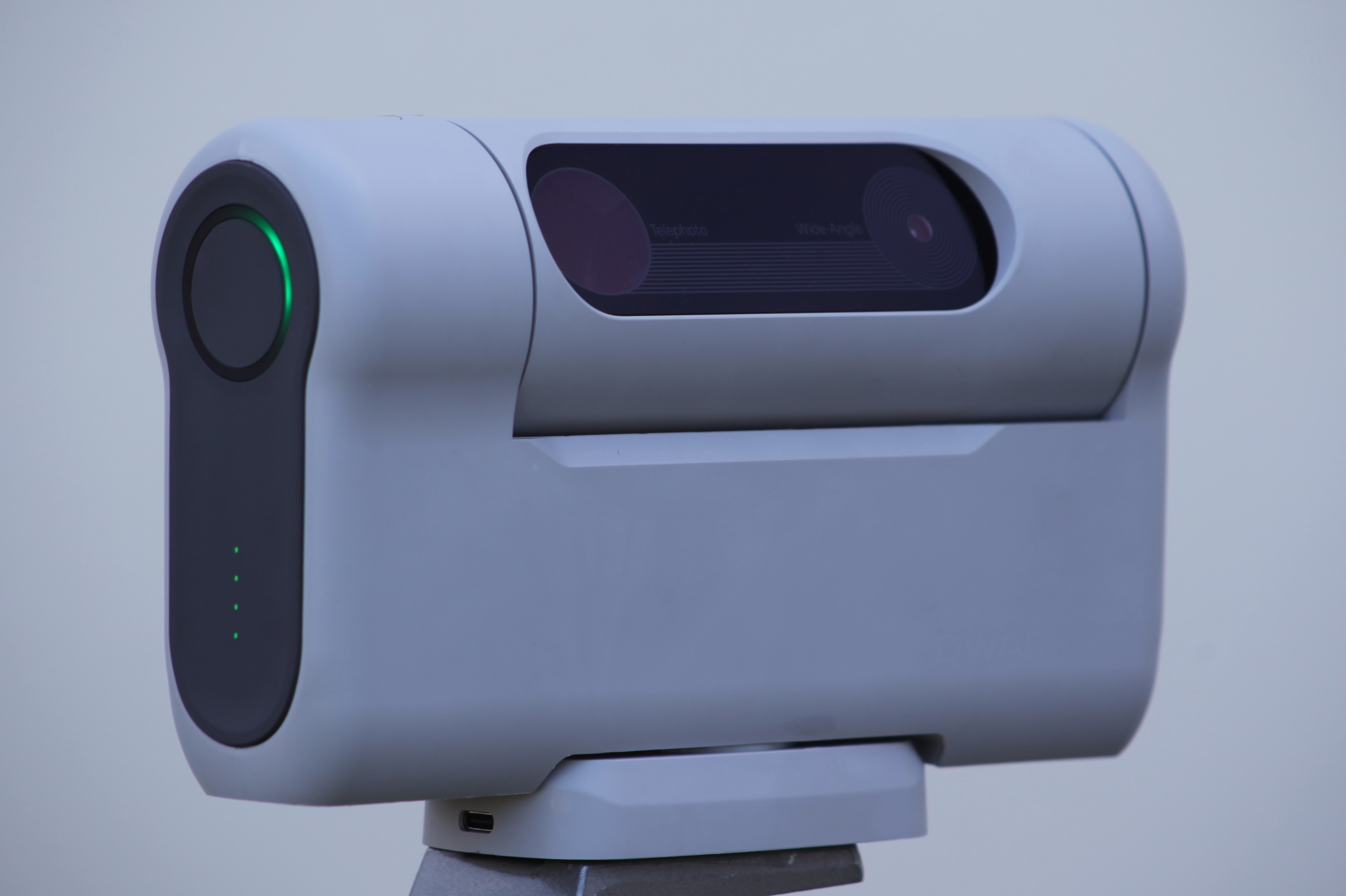 |
SMART TELESCOPE DWARF II |
 |
SMART TELESCOPE DWARF II |
In recent years smart telescopes have become available. These are electronic devices, not resembling the optical tubes we associate with astronomy. They do not have the wide aperture or quality of optics that traditional telescopes possess, yet have benefits which make astrophotography much simpler. It is not necessary to know exactly the position of the south celestial pole to track the sky, or the location of any deep sky objects to photograph them. The computers which operate the telescopes store a record of the entire sky's stars enabling them to use plate solving to find any spot and track it as the Earth turns. Although not a replacement for a dedicated astrophotography rig, they provide quick pictures for anyone interested in taking photos without needing to learn how to navigate the night sky.
The following five photographs were taken with a Dwarf II smart telescope in the Summer of 2025.
The Dumbbell Nebula on the left was the first planetary nebula discovered. On the right is the Swan Nebula, easily recognised by the bright swan-shaped cloud of dust.
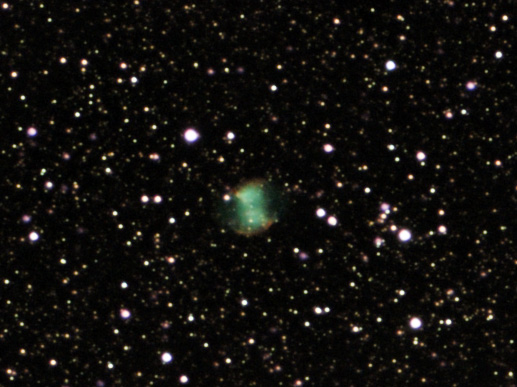 |
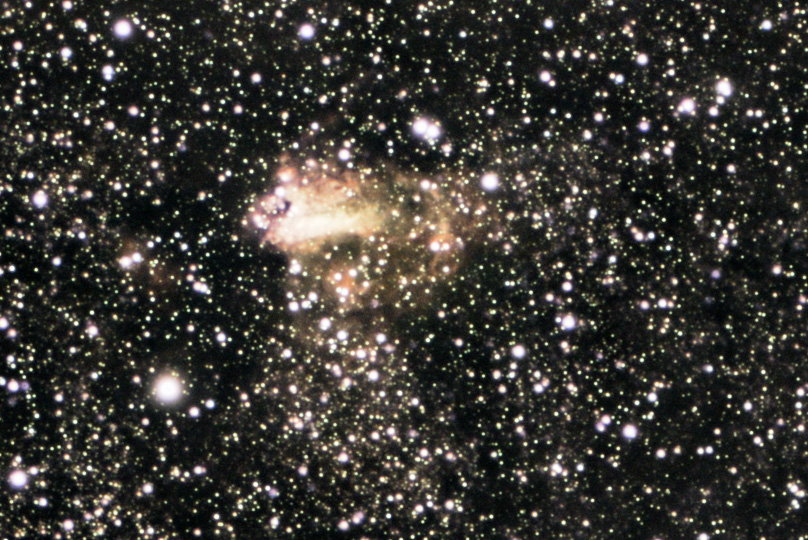 |
Following is the great nebula of Orion, with the running man below. On the right is the Carina nebula, another region of star formation.
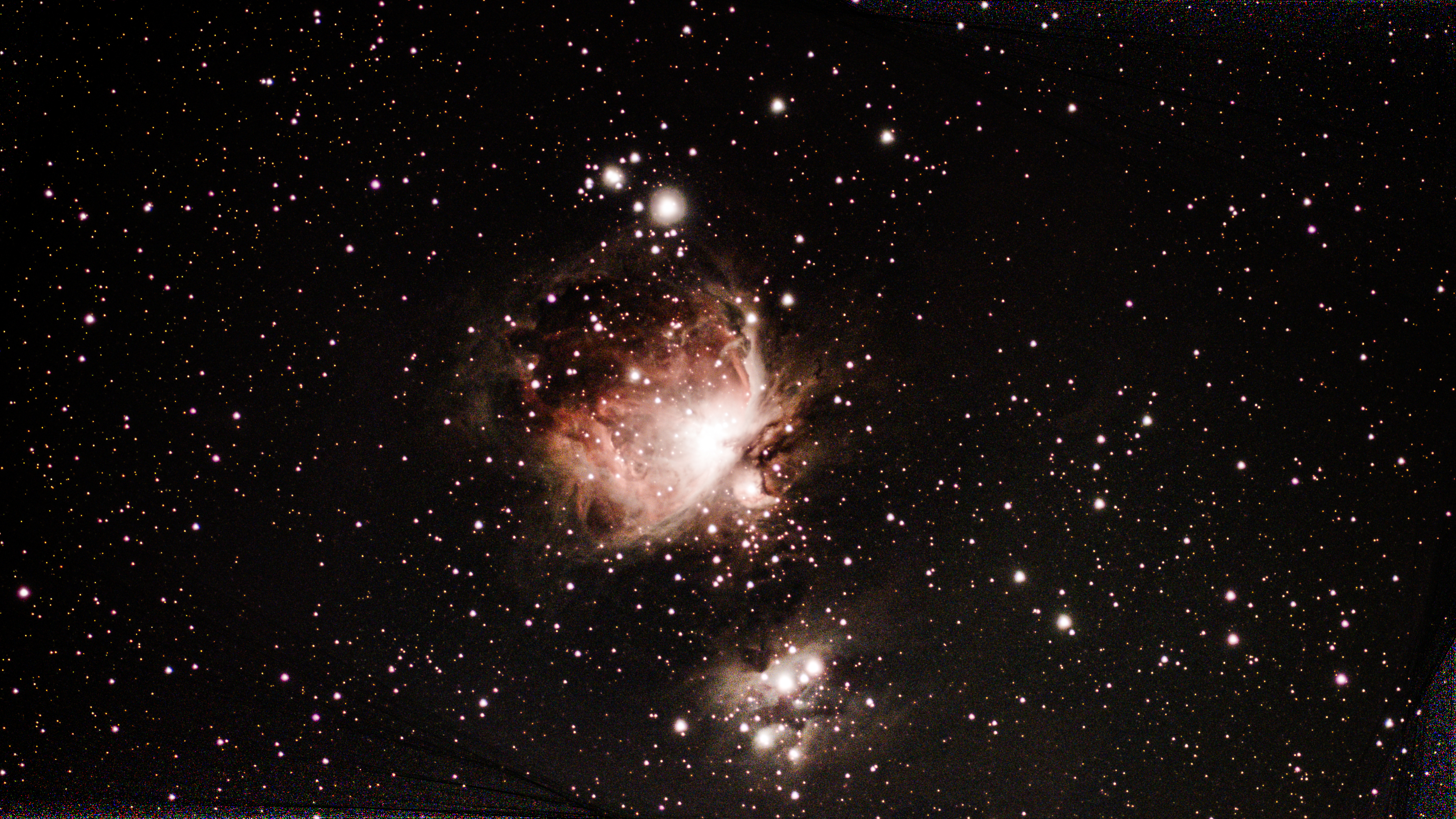 |
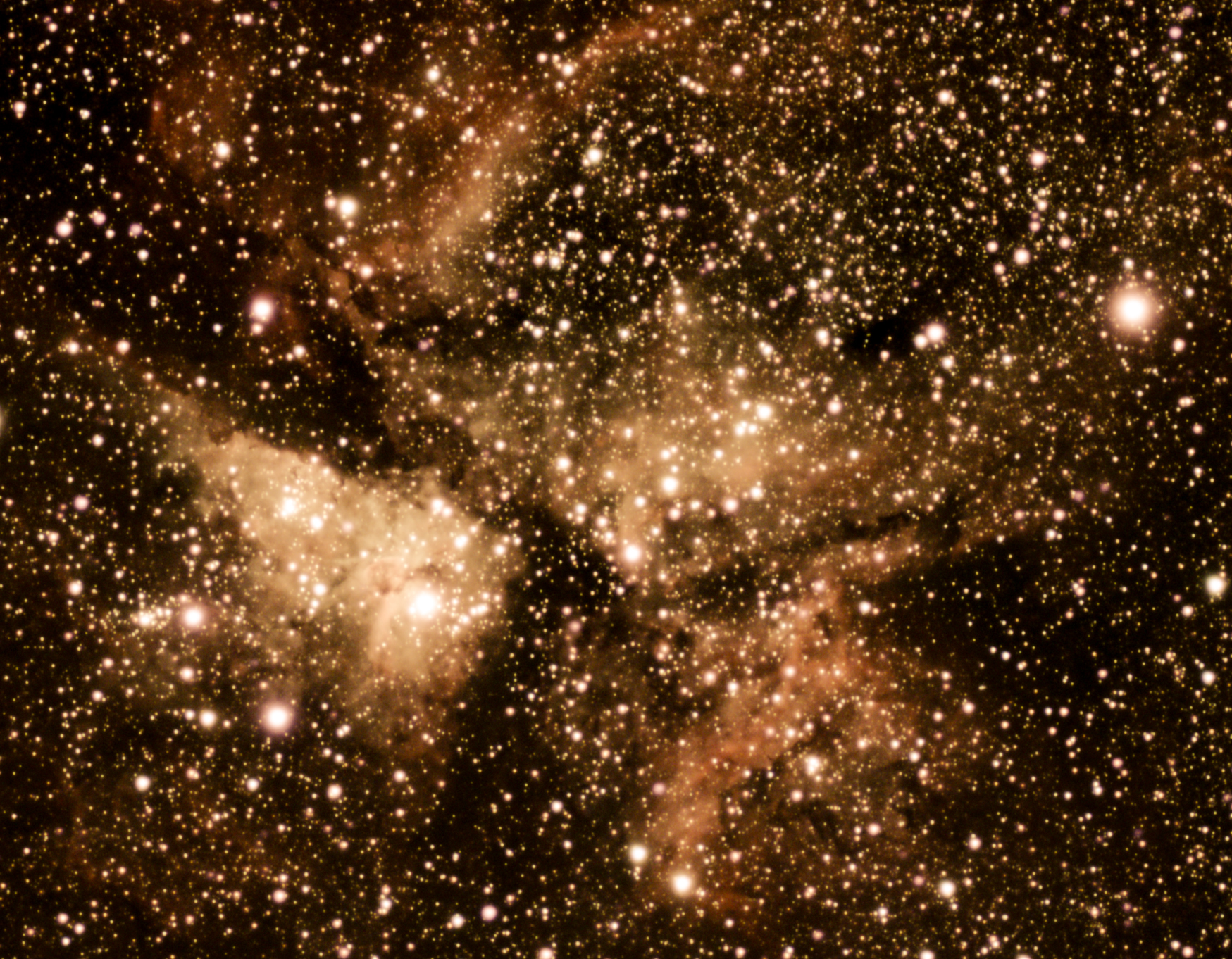 |
The Large Magellanic Cloud is full of nebulae and star clusters. This strip through the cloud shows the Tarantula Nebula at lower right, and various clusters.
 |
|
SMART TELESCOPE ZWO SEESTAR S50 |
All the remaining photographs on this page were taken with a ZWO Seestar S50. They were made during the Summer of 2025.
On the left is the banana nebula. On the right is the Casper nebula, which resembles the 'friendly ghost'.
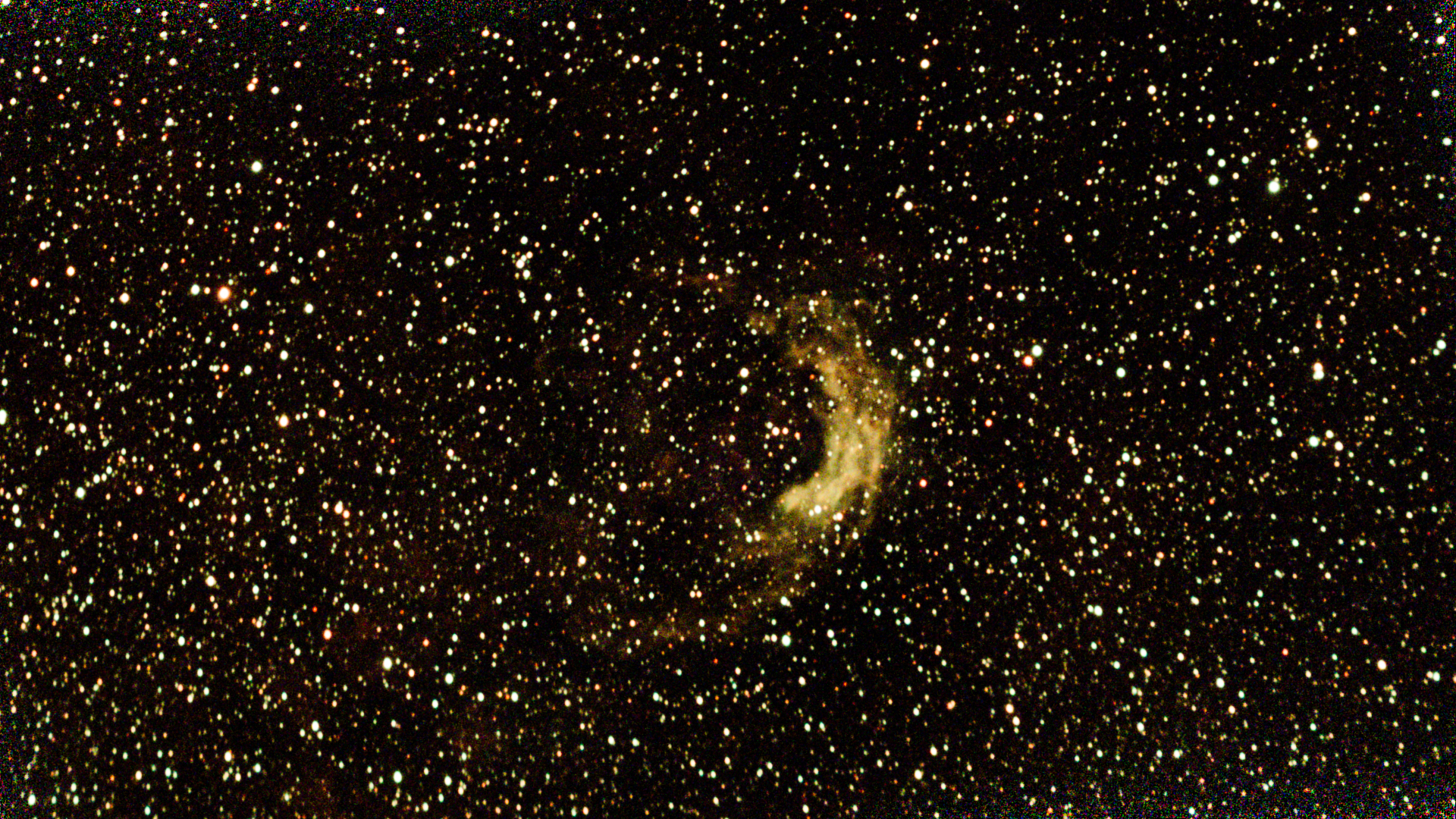 |
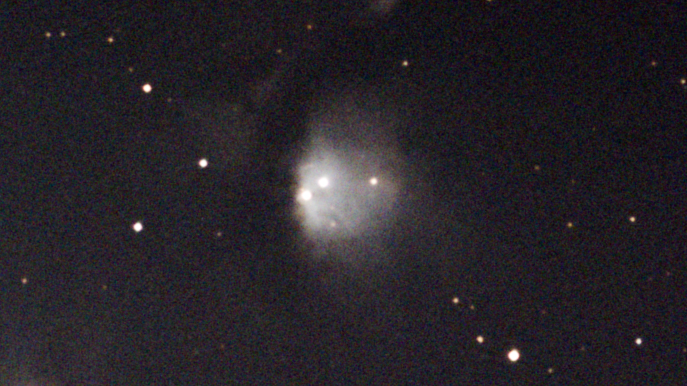 |
Below is the centre of the Rosette Nebula. On the right is the Helix Nebula, one of the brightest planetary nebulae in the sky.
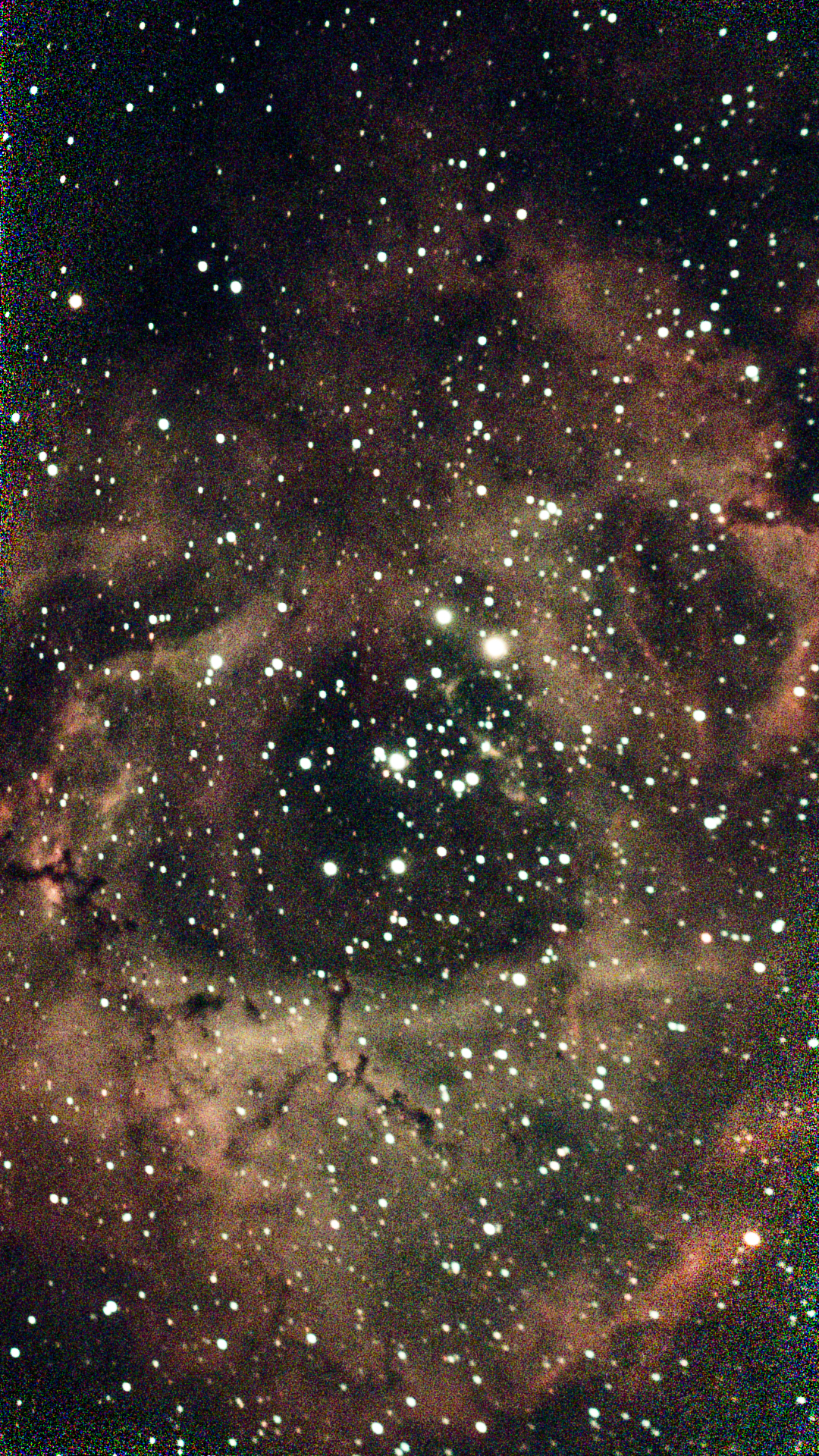 |
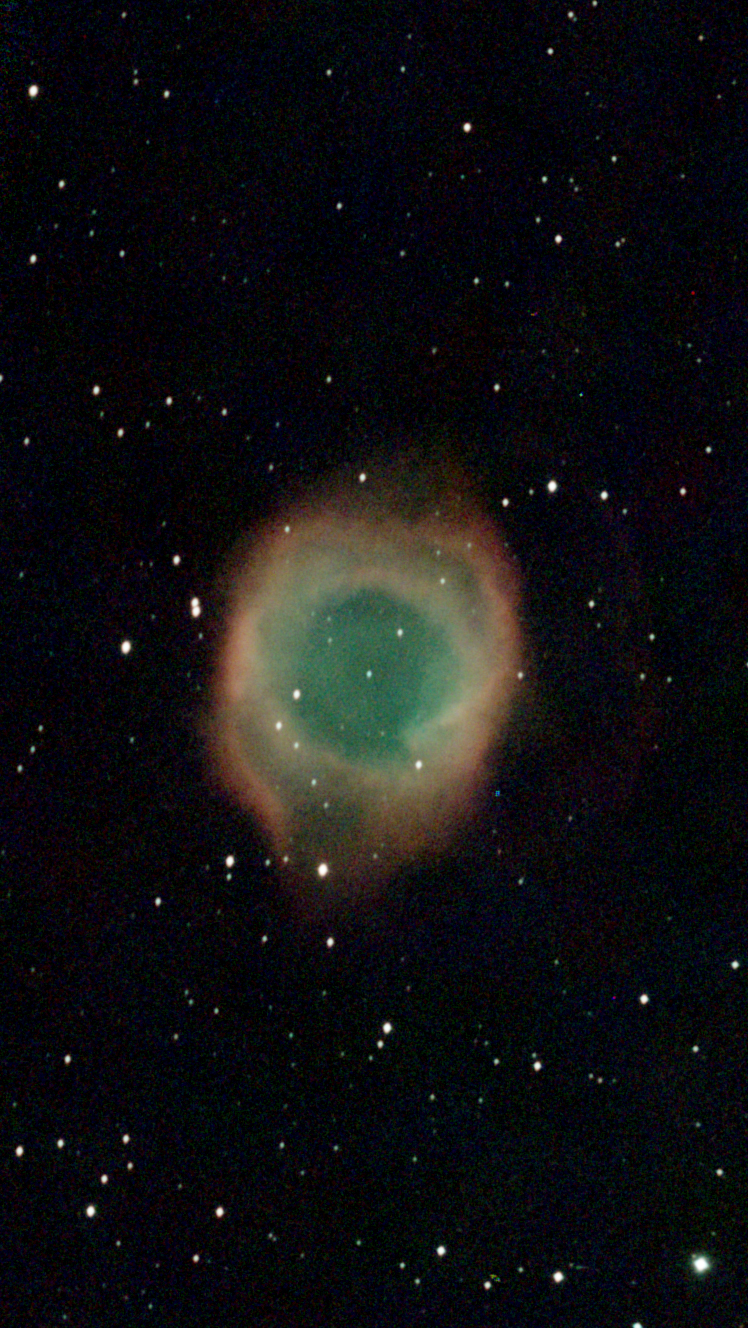 |
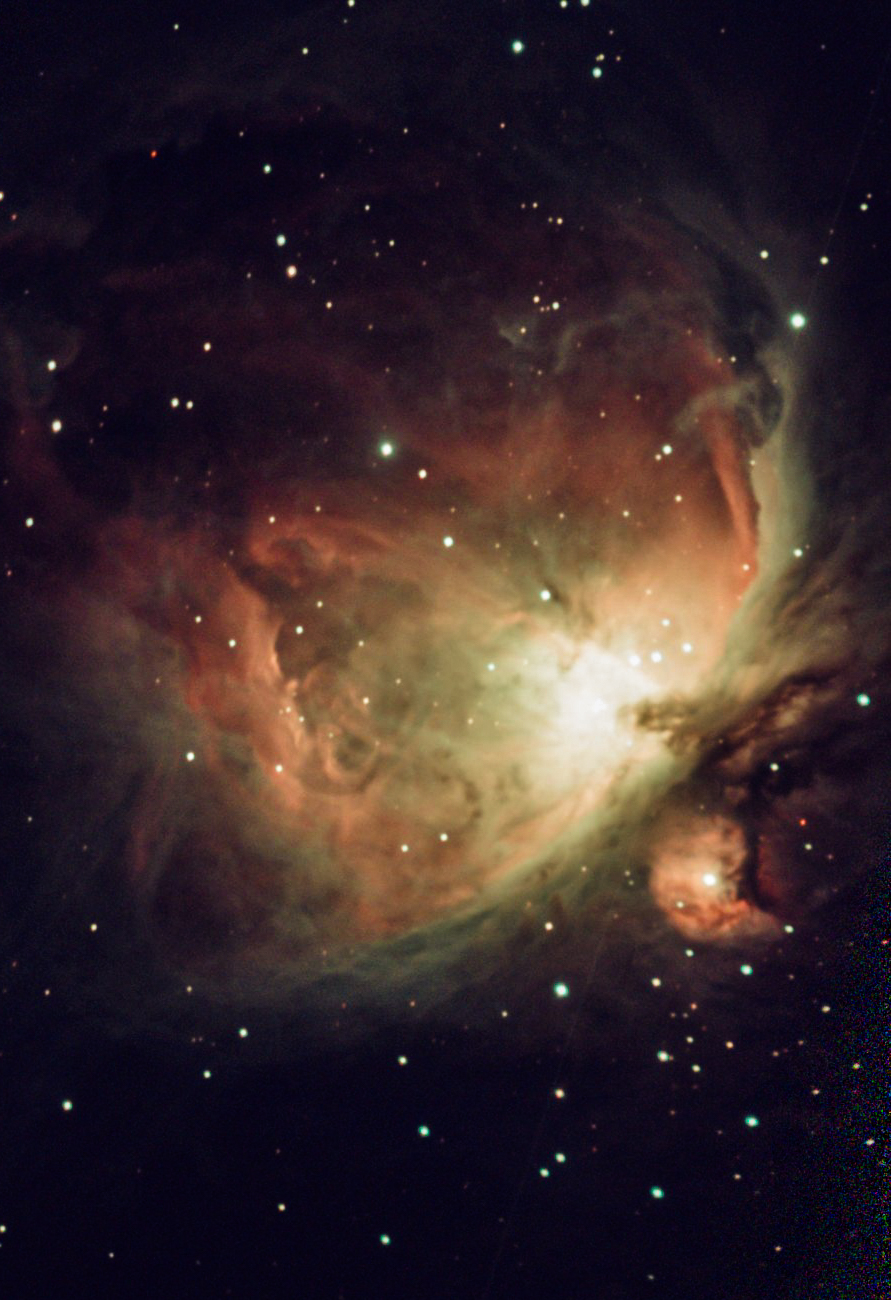 |
This is the great nebula of Orion, the middle of the handle of "The Pot", which appears to be a fuzzy star when viewed with the unaided eye. One of the brightest nebulae in the summer sky. This image was stacked in the telescope from 360 ten-second exposures (one hour exposure in total). |
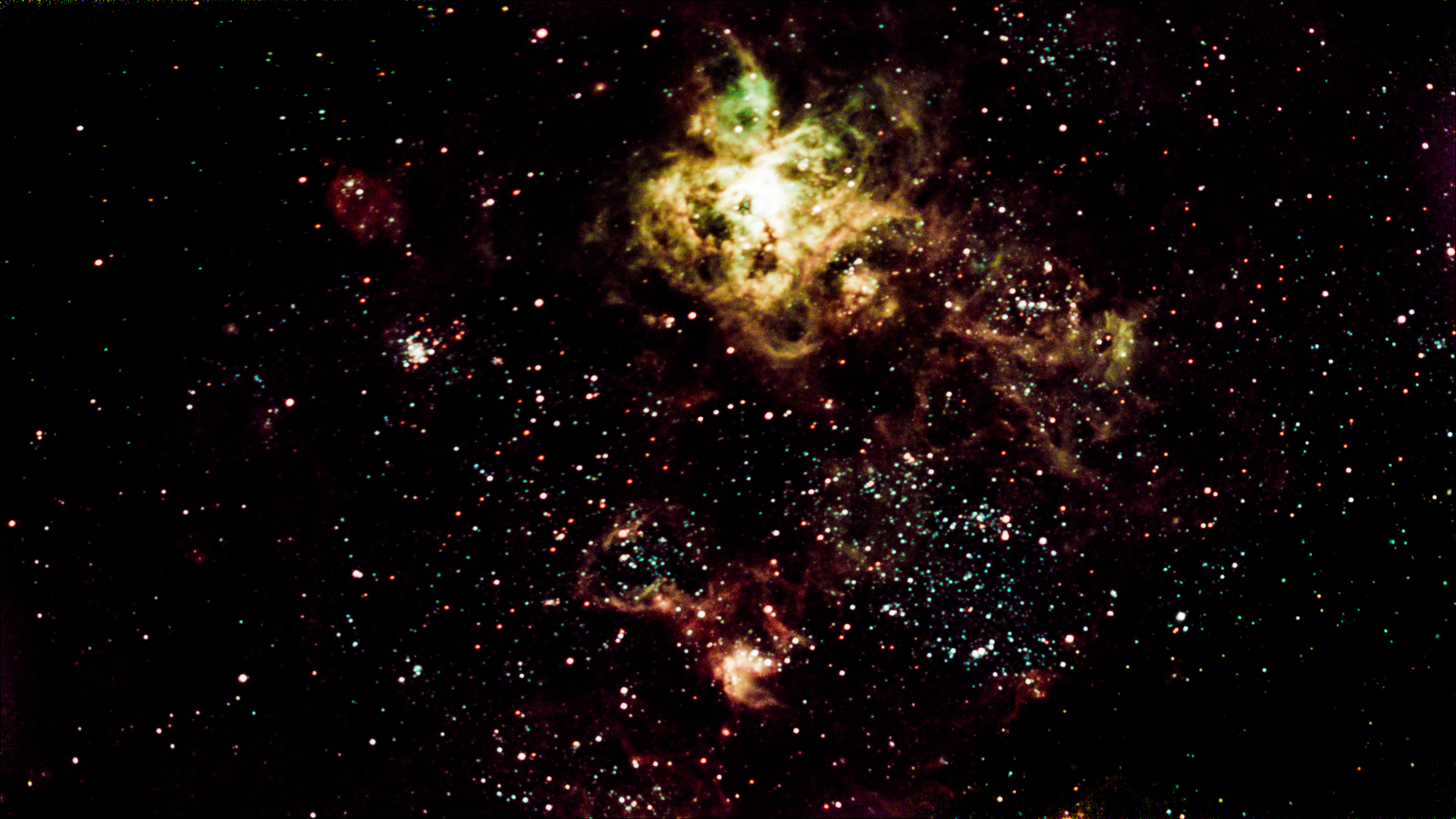 |
This photo is the middle of the Large Magellanic Cloud, the Tarantula nebula being the biggest visible in the shot. This shows the whole field of the Seestar. If a larger area is preferred, the smartscope can be set to take a mosaic, the individual shots being partially overlapped to cover a much bigger area of the sky. |
Each of these astrophotographs was taken over a different time period, from a few minutes to three and a half hours for the Large Magellanic Cloud just above. Some were post-processed in Siril or Photoshop if it looked necessary, or not processed at all after the smart telescope had stacked them. For these reasons it is not possible to judge which instrument is better. Spending much more time collecting images and post-processing them would improve the results in all cases. There are several videos on YouTube describing and comparing these smart telescopes in detail, for example https://www.youtube.com/watch?v=UE0ghSDTYrY&ab
The Dwarf II is no longer available, it has been replaced by a Dwarf III which is an improved model. Likewise, there is a Seestar S30 which is smaller and lighter than the Seestar S50, with improvements.
Click here to return to Palmerston North Backyard Astronomy...